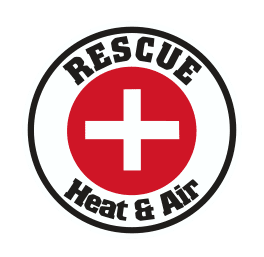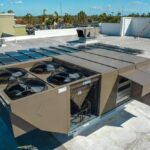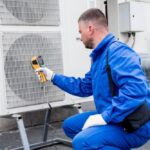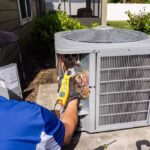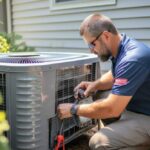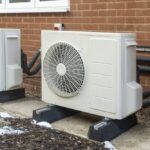Table of Contents
Not every HVAC issue requires a professional technician—at least not right away. Many common heating and cooling problems can be resolved with a bit of basic troubleshooting, saving you time, money, and the discomfort of sitting in a hot or cold home.
Knowing what to check before you call a HVAC contractor is especially helpful in peak seasons when service calls may take longer due to high demand. In this guide, we’ll walk you through practical steps to identify and fix minor HVAC issues before calling for help.
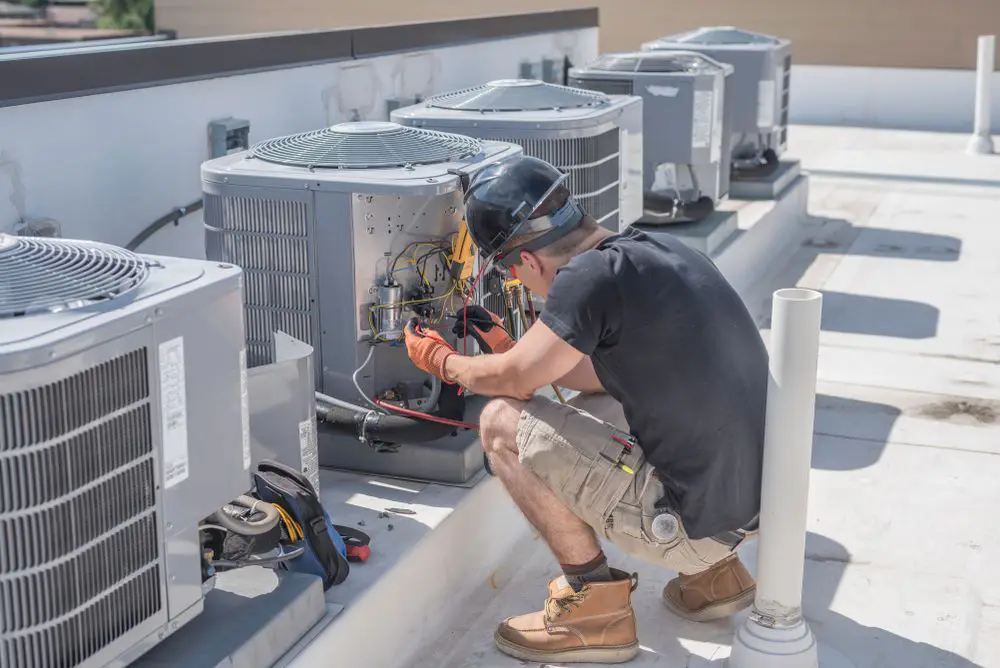
8 HVAC Troubleshooting Tips to Try Before You Call a Pro
If you’re in Oklahoma and still need professional support, Rescue Heat s Air is just a call away. But first, here’s what to try.
1. Check Your Thermostat Settings
What to Look For:
- Is your thermostat turned on?
- Is it set to “cool” or “heat” based on the season?
- Is the temperature set appropriately?
What to Do:
Change the batteries (if it’s not hardwired) and make sure the display is working. A thermostat set incorrectly is one of the most common causes of no-heating or no-cooling calls.
2. Inspect Your Air Filters
What to Look For:
- Is your air filter visibly dirty?
- Has it been more than 1–3 months since your last replacement?
What to Do:
Replace it. A clogged filter restricts airflow, causing your system to work harder and cool or heat less efficiently. It can also trigger system shutdowns due to overheating or freezing.
3. Check the Circuit Breaker
What to Look For:
- Has the HVAC circuit breaker tripped?
- Is the switch in the “off” or neutral position?
What to Do:
Reset it by turning it off and back on. Power surges or system overloads can cause a tripped breaker, cutting power to your HVAC system.
4. Ensure All Vents and Registers Are Open
What to Look For:
- Are furniture or rugs blocking vents?
- Are supply and return vents fully open?
What to Do:
Clear any obstructions. Closed or blocked vents reduce airflow and create uneven heating or cooling in your home.
5. Check the Outdoor Unit
What to Look For:
- Is the condenser unit covered in leaves, dirt, or debris?
- Is it making strange noises?
What to Do:
Turn off the system and gently clean the area around the outdoor unit. A dirty condenser can cause the system to overheat or underperform.
6. Look for Signs of Ice on the System
What to Look For:
- Ice buildup on refrigerant lines or the outdoor unit
- Reduced airflow from vents
What to Do:
Turn off your HVAC system completely and switch the fan to “on” to help thaw the ice. Don’t run the system with ice on it—it could cause damage. If the issue persists, it likely points to a refrigerant or airflow problem that needs a technician.
7. Listen for Unusual Noises
What to Listen For:
- Banging, clanking, or screeching sounds
- Loud rattling or grinding
What It Might Mean:
Loose components, motor problems, or worn belts. If noise continues after a basic inspection, call in the pros—it could signal a serious internal issue.
8. Smell Something Strange?
What to Sniff Out:
- A musty odor could indicate mold in ducts or filters
- A burning smell may signal an electrical issue
- A rotten egg smell is a major red flag for a gas leak
What to Do:
If you detect a gas smell, evacuate immediately and contact your utility provider. For musty or burnt smells, turn off the system and schedule a service call.
When HVAC Troubleshooting Isn’t Enough: What to Do Next
If you’ve gone through the key troubleshooting steps—checked your thermostat, replaced the filter, inspected breakers and vents—but your system still isn’t performing, it’s time to call in a licensed HVAC professional. Prolonging the issue could make it worse, especially if there’s a deeper mechanical or electrical problem involved.
Issues like refrigerant leaks, damaged blower motors, faulty capacitors, or wiring problems aren’t something homeowners should tackle themselves. These components require technical diagnostics, specialized tools, and the expertise of a certified technician to repair safely and correctly.
At this point, reaching out to a professional not only saves you time but prevents costly system damage down the line.
Tried Everything? Here’s When to Call an HVAC Pro
Even the most proactive homeowner can’t fix everything—and that’s okay. If your HVAC unit is making strange noises, cycling on and off frequently, blowing warm air in cooling mode (or vice versa), or simply not turning on at all, it’s time to call in the experts.
These are often signs of underlying system failures that only trained HVAC professionals can identify and repair. Rather than guesswork or temporary fixes, a skilled technician can pinpoint the root cause, ensure system safety, and get your heating or cooling back to normal fast.
In Oklahoma, Rescue Heat & Air is your trusted local expert. We’re ready to step in when DIY just won’t cut it—with fast response times, transparent pricing, and solutions that last.
How Rescue Heat & Air Helps Oklahoma Homeowners
At Rescue Heat & Air, we’re proud to serve Claremore, Tulsa, Owasso, and surrounding Oklahoma communities with honest, dependable HVAC service. When your DIY troubleshooting efforts come up short, our experienced technicians are ready to step in.
We offer:
- Rapid response and emergency service
- Transparent diagnostics—no surprise fees
- Maintenance plans to reduce future breakdowns
- Licensed, trained, and local technicians who care
Whether it’s a thermostat issue, airflow concern, or something more serious, our team is ready to restore your comfort.
Final Thoughts
Troubleshooting your HVAC system before calling a professional can save you money and prevent unnecessary repairs. From filter checks to thermostat resets, these simple steps often solve common issues. But when the problem goes beyond a quick fix, having a trusted local HVAC partner like Rescue Heat & Air makes all the difference.
Need Expert HVAC Help in Oklahoma?
If troubleshooting didn’t work, don’t sweat it. Call Rescue Heat & Air today at 918-946- 6681 or schedule service online. We’re here to get your system back on track—quickly, professionally, and with your comfort in mind.
